The white flower above is known by several names: Indian pipe, Ghost plant and Corpse plant. Like squawroot, Indian pipe can’t meet its own nutritional needs since it has no chlorophyll. It leads a parasitic life just as squawroot does.
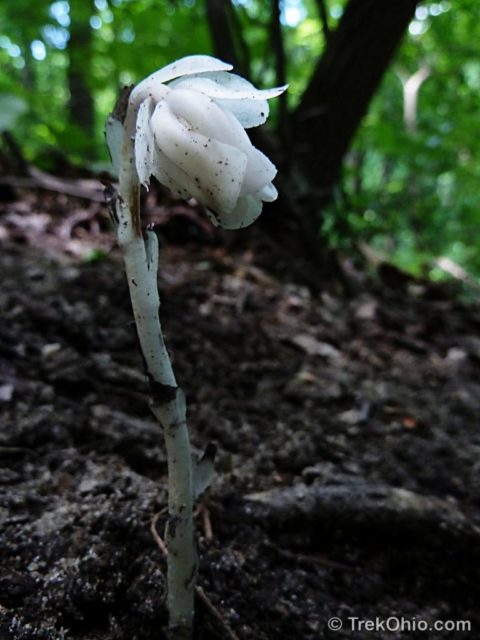
While squawroot gets its nutrition by directly tapping into the roots of oak trees, Indian pipe gets its nutrition more indirectly. It’s host organism is a fungus, a member of the Russulaceae family. This fungus gets its nutrition from tree roots. However the Russulaceae fungus has a symbiotic relation with its tree, so the tree benefits from the relationship. (This kind of symbiotic relationship between a fungus and a tree is known as a mycorrhizal relationship). However squawroot just sponges off the fungus, benefiting only itself. Since Indian pipe feeds off a fungus which feeds off a tree, Indian pipe ultimately is depending on the tree and its ability to photosynthesize and make food.
Unlike squawroot which has many flowers emerging from each stalk, Indian pipe only has a single flower per stalk. The stalk of the Indian pipe does not have true leaves, but it does have scales. Typically Indian pipe is white, but sometimes it has a pinkish cast. In rare cases, it’s actually red. Like other flowering plants, it depends on a pollinator (like bees) to reproduce. Once it has been pollinated, it quickly goes from white to an ugly black. I’ve never taken a photo of one of these ugly, withering black flowers because …. well, because they’re ugly. ![]() But next time I see one, I will.
But next time I see one, I will.
Earlier this spring I saw many wildflowers during my walks in the forest. However, now that the forest floors are dark and shady, the flowers have mostly disappeared. Since Indian pipe doesn’t depend on sunlight, its flowers will be emerging off and on throughout the summer the whole way into September. Nonetheless Indian pipe is not a common plant because it’s parasitic lifestyle is so dependent on a number of conditions being just right.
I’m going to close with a couple more photos of Indian pipe, then some links to sites where you can learn more.
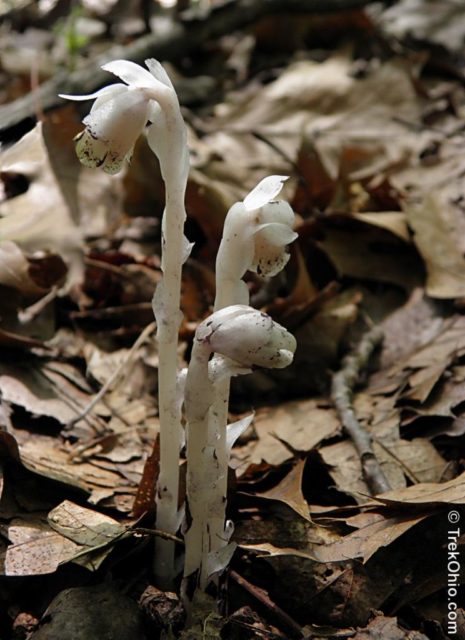
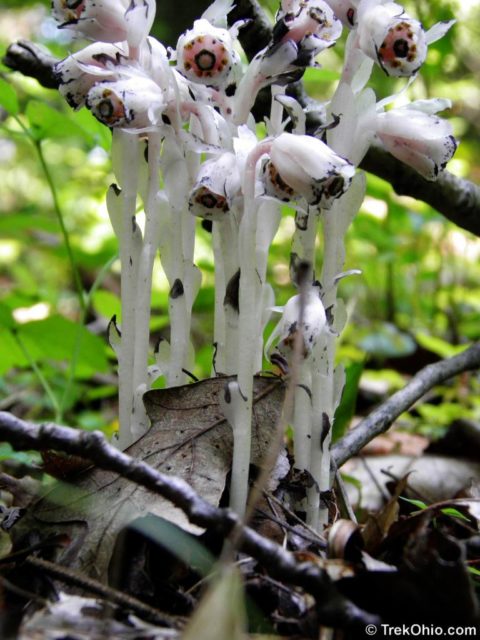
Additional information
- Monotropa uniflora: Indian pipe article at Wikipedia
- Russulaceae: This is the family of fungus on which Indian pipe feeds.
- Mycorrhiza: This describes the symbiotic relationship between some fungus and members of the plant kingdom.
- Indian Pipe: A nice article about Indian pipe by the Somers Land Trust of New York.
More on Plants without Chlorophyll
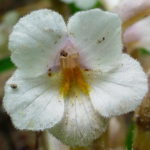
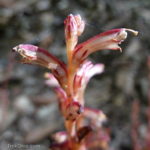
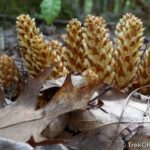
Do you have any more info on the squawroot. Pictures would help with identification. I have a plant? growing under my oak tree (squaw root?)that I first identified as Indian pipe but as I researched it it seem to me not to be Indian pipe. Flowers did not hang down, no scales on stalk. PLease help me work this out.
See our article on Squawroot.
Hi Deb,
Nice post on Indian Pipe. In my part of NJ, it pops up in mid to late summer, usually after a period of soaking rain. But last summer, despite lots of rain, I didn’t see a single plant. Looking forward to seeing some this year.
Edna
Edna, thanks! I’m not sure if we are getting an early start on Indian Pipe or whether it just begins to bloom earlier here than it does in NJ. We were hiking last weekend, and we saw a surprising number of Indian Pipe along the trail.
Wow, that was interesting…”ghost flower” for sure! They’d make a great bouquet for a zombie. 🙂
Do you remember the Addams Family? I can just picture the little girl, Wednesday, giving a bouquet of these to her mother, Morticia. 🙂
Yes, right…perfect! lol!
Oooooh, I love that last photo – looks really creepy, ghostly with red eyes!
It’s a shame that the plant isn’t still blooming for Halloween — it would be perfect. 🙂